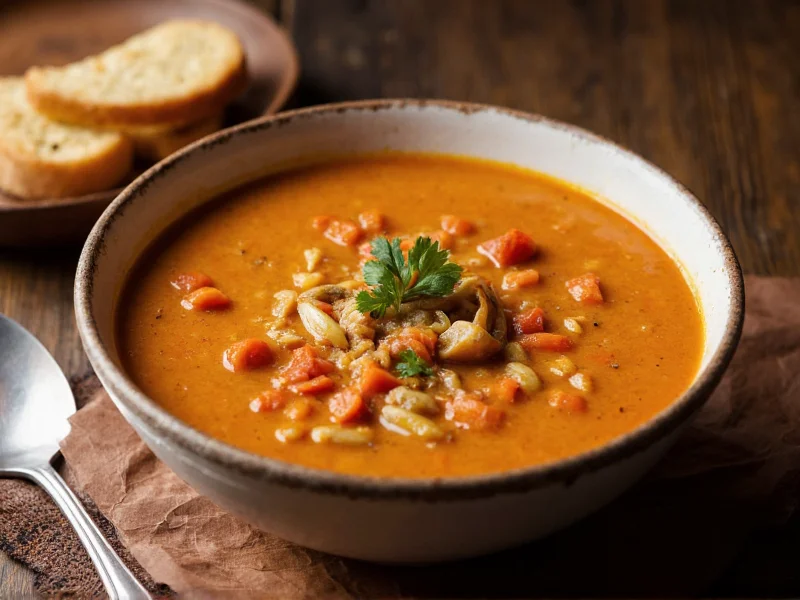When searching for \"el soup,\" most users actually seek information about eel-based culinary preparations. This common misspelling creates confusion in recipe searches and cultural food explorations. Understanding the distinction between these terms helps food enthusiasts discover authentic recipes and cultural contexts surrounding this unique protein source.
Understanding the Terminology Confusion
The mix-up between \"el\" and \"eel\" stems from phonetic similarities and typing errors. \"Eel\" refers to the elongated fish belonging to the order Anguilliformes, while \"el\" serves as the definite article in Spanish. This spelling error frequently appears in recipe searches, culinary discussions, and restaurant menu inquiries.
Food historians note that eel has been part of human diets since medieval times, particularly in European river communities where freshwater eels were abundant. The Dutch engelsche soep (English soup) and Swedish ålgratäng represent traditional preparations that have evolved over centuries.
Global Varieties of Authentic Eel Soup
Eel soup manifests differently across culinary traditions. Japanese cuisine features unajū (grilled eel over rice) which sometimes includes broth-based preparations. Chinese culinary tradition offers lo mai gai variations incorporating eel in soup formats, particularly in coastal regions.
| Cultural Origin | Traditional Name | Key Ingredients | Distinctive Features |
|---|---|---|---|
| Japanese | Unadon broth variations | Freshwater eel, dashi, mirin | Rich umami flavor, often served with rice |
| Dutch | Engelsche soep | Freshwater eel, root vegetables, herbs | Creamy texture, traditionally served with bread |
| Chinese | Eel bone soup | Eel bones, ginger, goji berries | Clear broth, medicinal properties in TCM |
| Swedish | Ålgratäng | Freshwater eel, potatoes, cream | Baked preparation with creamy topping |
Preparation Methods and Culinary Techniques
Preparing authentic eel soup requires specific techniques to handle the delicate flesh and remove any muddy flavors. Chefs typically soak eel pieces in salted water before cooking to draw out impurities. The Dutch method involves simmering eel with aromatic vegetables for several hours, while Japanese preparations often feature quick grilling before broth incorporation.
Food safety experts emphasize proper handling of eel due to potential toxins in raw blood. Traditional preparation methods across cultures have evolved to address these concerns through thorough cooking and specific preparation techniques. Most authentic recipes require cooking eel to an internal temperature of 145°F (63°C) to ensure safety.
Nutritional Profile and Health Considerations
Eel soup delivers significant nutritional benefits when prepared traditionally. A single serving typically contains:
- High levels of omega-3 fatty acids (comparable to salmon)
- Complete protein profile with all essential amino acids
- Substantial vitamin D and B12 content
- Minerals including calcium, magnesium, and potassium
Researchers at the International Food Research Institute note that traditional eel soup preparations maintain higher nutrient retention compared to modern processed versions. However, sustainability concerns exist regarding certain eel populations, particularly European eels which face conservation challenges.
Locating Authentic Eel Soup Preparations
Finding genuine eel soup requires understanding regional specialties. In Japan, specialized unagi restaurants often serve broth-based preparations alongside grilled eel dishes. European preparations appear in traditional taverns along river systems where eel fishing remains culturally significant.
Culinary travelers should look for these indicators of authentic preparation:
- Menues specifying freshwater versus saltwater eel sources
- Preparation methods described in detail
- Restaurants with generational ownership in eel-fishing regions
- Seasonal availability (many cultures prepare eel dishes during specific times of year)
Common Misconceptions About Eel Soup
Several myths persist about eel-based culinary preparations. Many believe eel soup carries strong fishy flavors, but properly prepared versions showcase delicate, sweet notes. Others assume eel represents a difficult ingredient to work with, though traditional methods have simplified preparation over centuries.
Food scientists confirm that the gelatinous texture some associate with eel soup results from improper preparation. Authentic versions maintain a clean broth consistency or smooth texture depending on the cultural variation. Understanding these distinctions helps enthusiasts appreciate the culinary sophistication behind these traditional dishes.











 浙公网安备
33010002000092号
浙公网安备
33010002000092号 浙B2-20120091-4
浙B2-20120091-4